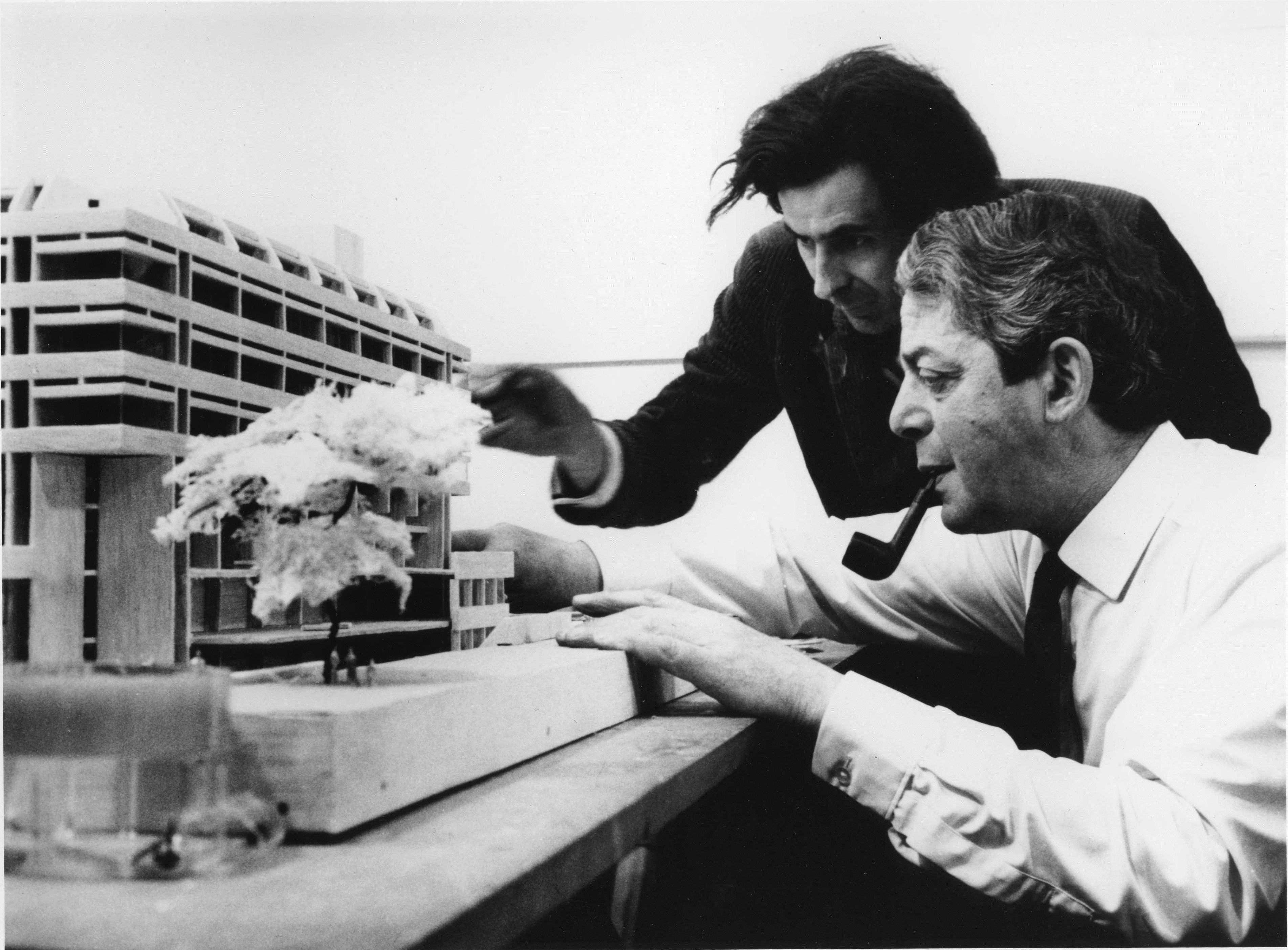This autumn our largest exhibition to date,The anatomy of a building: Denys Lasdun and the Royal College of Physicians, explores the story behind the creation of our extraordinary modernist headquarters, located amid the historic 19th century John Nash terraces on the outskirts of Regent’s Park. We are also celebrating the centenary of our building’s visionary architect, Sir Denys Lasdun (1914–2001). Now recognised as one of Britain’s leading modernist architects, most people will know of Lasdun as the architect responsible for the controversial National Theatre complex on London’s South Bank.
We are also celebrating the centenary of our building’s visionary architect, Sir Denys Lasdun (1914–2001). Now recognised as one of Britain’s leading modernist architects, most people will know of Lasdun as the architect responsible for the controversial National Theatre complex on London’s South Bank.
Lasdun is an interesting character, because his buildings still divide opinion today. Prince Charles famously declared that the National Theatre was ‘a clever way of building a nuclear power station in the middle of London without anyone objecting’. In 2001, BBC Radio 4’s Todayprogramme conducted a survey of nearly 16,000 people, to find Britain’s most- and least-loved buildings. The National Theatre appeared as the fourth most popular construction, but it also drew over 11% of votes for the worst of British architecture.

Whatever you think of Lasdun’s buildings, they express a unique architectural language, and reveal the philosophies and techniques of a really exceptional architect. Our exhibition shows that Lasdun believed that architecture was an art that should be used solely for the improvement of lives.
He used an almost wildly expressionist method of drawing rough sketches with his thick 6B pencil, which his team would interpret and turn into precise drawings and models. These balsa wood models were used as design tools themselves – in addition to the polished presentation models given to clients to represent the eventual finished building, Lasdun’s model makers produced (and discarded) hundreds of rough models used to get an idea of volumes, masses and voids. Today, computer-aided design makes this process so much easier!
Lasdun also spoke about the ‘urban landscape’ – where architecture is seen as an extension of the city or landscape, connected by bridges, platforms and terraces. Buildings should take in ‘the whole of human experience’, by extending relationships and creating a sense of belonging and participation. This is what Lasdun did at the National Theatre. Perhaps those who object to it do not like the building’s unashamed exploitation of concrete; on the other hand, perhaps those who love it understand that the building achieves exactly what Lasdun set out to do – create a space that brings people together for wonderful shared experiences.
Come along to our exhibition and learn about the man behind the buildings; we’d love to learn what you think of our building!
Sarah Backhouse
Exhibition coordinator
The anatomy of a building: Denys Lasdun and the Royal College of Physicians: 8 September 2014 – 13 February 2015
Find out more about our building and collections on our blog, and follow RCPmuseum on Twitter.
